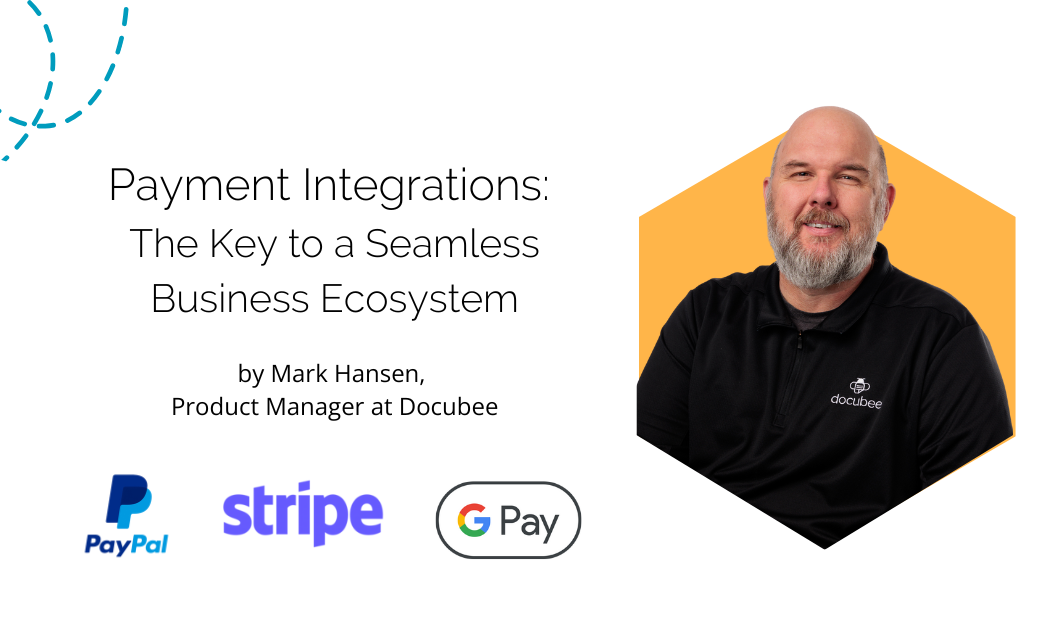Every new year brings a mix of new laws, regulations, and intricacies for legal professionals that paralegals need to stay on top of. And, 2024 is no exception. With so much being thrown your way (on top of everything you already had going on), our team wants to give you tips and predictions to take on the new year strong and have a plan in place when 2025 rolls around.
Our latest webinar, Reimagining the New Year: How to Better Navigate Legal Changes in 2024, hosted by Mark Hansen (Product Manager) and Amber Hadley (Senior Growth Marketing Manager) from Docubee in partnership with Paralegal Voice podcast hosts, Tony Sipp and Jill Fransico, is full of info you can’t afford to miss. If you didn’t make it to the webinar, no worries because we have the top insights for you here. You can also listen to the webinar in full below:
New Expectations for Paralegals
The role of paralegals has expanded beyond just legal research and drafting. As the backbone of law offices, helping the entire firm work better together is key.
It’s not just about legal research and drafting anymore. On top of that, staying abreast of new laws, updating and adding new forms to support legal changes, and acting as an advocate have become crucial to the role of modern paralegals. Plus, staying on top of the legal solutions used across your firm to implement changes and keep things working smoothly is essential.
“Today’s paralegals have to utilize technology and make themselves more efficient and valuable with tools that allow that to happen.”
We know you’re responsible for A LOT. Keep reading for tips to make your life easier and best practices to help bring more value to your firm in 2024.
Tips to Prepare Your Firm for New Laws & Regulations

New regulations and how to stay abreast of them were a hot topic of the webinar discussion.
Most of the laws from last year we heard about went into effect on the 1st of the year, and that’s something a lot of people aren’t aware of or forget to prepare for. For example, Tony recalled that in California, a Supreme Court ruling went into effect that bumped paid sick leave requirements from 3 days to 5 days. Changes like this, the Corporate Transparency Act, and more greatly impact the standard forms the firms need to use and the data that needs to be collected to avoid fines and penalties.
“The law is fluid, and because of that you have to be too.”
So, how do you stay ready for new laws? Tony and Jill shared their top 3 tips with us:
1. Follow Senate & Assembly Bills Closely
Tony shared with our team that following the Senate and Assembly bills closely throughout the year helps paralegals anticipate and prepare more effectively. There are a myriad of tracking tools out there to use, or you can do this manually using sites like congress.gov.
2. Keep Your Team Informed
In addition to looking for new changes, the Paralegal Voice podcast hosts also emphasized the importance of keeping the rest of the firm in the loop.
“Staying on top of things isn’t too difficult, but making sure the other people you work with know is important.” shared Jill.”It may feel like a burden to educate others, but it matters.”
And here’s why:
There may be new data that needs to be collected that others need to know about, other employees may need to update their own processes, and the rest of the firm should know the rationale behind process changes to avoid pushback.
“Paralegals tend to be the first ones to see those forms that are being implemented or have already been implemented, ” shared Tony. “Since they’re the ones acting as a manager of these documents, they need to make sure they are communicating these changes to the whole management team, secretaries, and anyone else who will be doing the filings.”
3. Prep Your Forms Ahead of Time
Before informing your team, get forms prepped and ready to go. Being able to say, “Hey, we know there is a new form out there that wants this new information, so I went ahead and collected that information.” not only takes stress off the attorney, it helps reiterate your value to them.
As the Product Manager of Docubee, which is used often by law firms, Mark Hansen has seen his fair share of updates during the beginning months of the year. He shared, “We’ll see a lot of updates to forms and intake and things like that to start capturing new data points. It’s just something that it seems like every year rolls around and here’s a whole bunch of changes we need to go ahead and envelope and it’s sort of a theme.”
AI for Paralegals: It Isn’t What You Think
Another key point we covered is how artificial intelligence (AI) is actually affecting firms in 2024. There is this common misconception that AI is going to take over and eliminate everyone’s jobs – but that couldn’t be further from the truth.
“[AI is] not taking over people’s jobs, it’s just making your organization more efficient and getting things to the right people quicker.”
Tony recalled the ways he’s seen AI affect his firm, as well as others in the industry. And the key takeaway was this: Everybody’s worried about AI, but automation is going to happen and it’s better for your job than you think. It costs the client less and the firm less to use automated systems with AI capabilities that support their needs.
Common Uses of AI for Paralegals
So we’re all on the same page now that AI isn’t evil. But how can it be used by paralegals?
Lucky for you, we also discussed practical use cases such as:
- Using it to search for key insights in data sets
- Using it as a starting point for documents
- Using it to look at pieces of code to understand a problem. However, this is more for the engineers in your IT department.
The most important takeaway Tony shared was this: “[AI] can solve some problems, but let’s be measured about it. Let’s just not jump off the deep end and start doing all these things without really any oversight or understanding of whether we are doing the right thing.” As well, keep in mind the ethical implications of using AI and act accordingly.
Taking a Look at How Legal Tech Solutions Transforms Processes

Legal tech solutions are vital to keeping efficiency top of mind for paralegals. So naturally, our hosts also discussed considerations on identifying the right tools, advocating for it, and making the most of those tools.
“It’s one of the cornerstones of being a paralegal to make sure that everything is efficient”
You Don’t Necessarily Need to Start from Scratch
You may already have a legal tech solution in place that’s working for your team. Even if this is the case, it’s important to think about ways your firm’s workflows could be more efficient. There may be optimizations you can make to your current tool that could make your job easier and help your firm work better together.
“You don’t always have to start from scratch, but there may be small things that can make your workflows more efficient.”
But, if your contract is about to expire and your tool just isn’t cutting it, it may be time to explore new legal tech solutions.
Finding the Right Legal Tech Solution
As we said before, there is no one-size-fits-all when it comes to legal tech solutions – some firms have one thing that works and others use something completely different. So exploring possible solutions and meeting with vendors to have your questions solved is imperative.
Ask yourself the following:
- What do we need next?
- What are we using?
- What haven’t we used with the product that we’re currently using?
- And what would flow better with the entire team?
Tonys shared his process with us for finding a tool: “It’s exploring, finding out what solutions are possible, then meeting and talking with the vendor, and then trying to have the vendor do a demonstration for the team. And that evaluation and the feedback that comes from that kind of determines whether we’re going to move forward with a particular vendor or go in a different direction.”
Our webinar gleaned important considerations to keep in mind with a prospective vendor:
Cybersecurity & Compliance is King
Tony and Jill shared that this is by far the most important thing to keep in mind. Ask your prospective vendor what security measures they have in place, how they meet industry legal standards, and if they have a process for updating their tool as new regulations come out.
How the Legal Tech Solution Works with Your Current Tools
Now, it’s important to note that depending on your firm and what systems you already have, this might not even matter to you. But, for most paralegals, it takes a combination of multiple tools to get the desired result.
Integrations allow your tools to talk to one another, sync data, and share documents so that the right info can be accessed. Ask prospective vendors what integrations they offer, and how they support the types of data sharing your firm needs. This is much easier to figure out before signing a contract than trying to force a makeshift solution if your tool ends up lacking functionality.
“Making sure that whatever solutions you have today are going to work with the solution you’re picking out, or at least you’re comfortable with the amount of data you can move between the two – depends on your own needs”
Is the Solution ACTUALLY Going to Save Time
Don’t just jump in with the first tool you find. Instead, take time to evaluate whether any improvements will come from its features and whether those features are beneficial to the firm. And if the tool is complicated to use, it might not be worth it.
Tony’s experience with new tools involves geeking out with research. He shared, “The nerd in me comes out when it comes to technology and I do my research on all of these products that I’m like, oh, the contracts are about to expire. What do we need next? What are we using? What haven’t we used with the product that we’re currently using? And what would flow better with the entire team?”
In addition to getting a demo from your potential vendor, vet the tool with your IT department or designated technology trainer on the team. Your team will thank you.
Common Hurdles Paralegals Face With New Legal Solutions

Finding the right tool is one thing, but getting it set up can be its own hurdle. Though it is 100% worth it for the time savings, many paralegals run into issues finding the time to set up their tool and getting the rest of the firm on board. So, how can you overcome these barriers?
Start Small
If you’re struggling with finding time to set your tool up, Mark Hansen recommends standing up processes in increments.
As a Product Manager at Docubee, Mark helps teams automate legal processes on the daily, and shared “I think that usually when people come to us, at least initially, there’s a sort of grander idea of what they want to do, but what we found is that breaking that into pieces and sort of helping users get incremental parts of it up and running is a better path.“
Be An Advocate
Another major roadblock is getting buy-in from the attorney and larger team. Setting things up slowly can also help with this by easing your team into the new tool. But, becoming an advocate of the tool is another great way to get your legal solution off the ground.
Doing your research as we mentioned before and equipping yourself with knowledge of HOW this tool is going to help out is the best tool for getting buy-in. Working with legal pros setting up solutions, Mark recalls that frustration happens when teams can’t see the value. When it comes to getting that buy-in, Mark shared, “It’s just a matter of doing that background work, doing that prep work, and so then you’re best prepared to try to make the changes as smooth as possible.”
Why Choosing the Right Vendor Matters
Finally, in addition to checking all of the functionality boxes, a legal tech solution needs to have the right vendor behind it so that you can have a supportive partner in bettering your processes.
You should be able to tell your account or product manager if things aren’t working, you need to be able to partner with your vendor to make things right.
Mark shared, “You have got to work with the vendors, you got to make sure that they’re on board with what the firm’s mission is what your mission is, and what we need from you so that we can best provide for the firm, for our clients, for the team that is supporting all of the attorneys. Choosing the right vendor makes a big difference.”
Webinar Q & A
“How would you handle managers or lawyers in the legal space who are resistant to technology and change?”
Mark jumped in to take this question, “Usually, most firms are kind of conservative and have their preferred vendors. There is this notion of “This is what we’re going to use. We’ve always used them, no exceptions.”
“You have to take the chance to say watch this: Here’s a solution that will help everyone. Show the added value to your team and how it can flow from what you were using before now. And, have your prospective vendor do a demo to give them a visual on just how it works.”
Sometimes I’m a little overwhelmed when looking at New Tech, where do you usually go to research New Tech and do you recommend speaking with a vendor first before deciding?
“Legalweek”
Tony shared, “I haven’t been there recently, but if you want to find all the technology that is like Disney World for new Legal Tech. You get to see three floors of just incredible products that people have and samples, which is the best part.
Having all those samples that they give away. I learned so much from doing those. And I also got our IT director to go as well. So it’s a tag team effort to make sure that we’re all aware of the technology that’s out there and available. And he’ll check the security side, I’ll check the user-friendliness side. This also helps with buy-in.”
“The ILTA, it’s the International Legal Technology Association.”
“They have a load of resources for people on the technical side of the legal space, everything from forums to kind of ask questions to conferences. They’ll actually be at Legalweek too, but they have their own conference, so I think they’re a good resource.”
P.S. Go here to learn more about Docubee’s legal tools.
“Do you ever find that you have any issues with client services when implementing New Tech?”
Mark shared his insights on this question: “We generally fill gaps in a lot of cases where there just wasn’t pre-existing technology. So going back to bridging systems, that’s an important concept for us. Being able to fill that gap between maybe your CRM and some other solution.So for us in general, it’s not been a really big friction point. And even when we do implementations where we replace pieces of it at Docubee, our tool is customizable enough to make it look fairly close. We’re working in a very similar manner to that it’s not so jarring. So at least from our side, I think in the past we’ve not really seen a lot of friction with it.
“So I know that Docubee and some other technologies out there can white-label things, so it doesn’t seem like they’re going into platforms that they don’t recognize or aren’t sure what they are. Is that important as well to keep that seamless experience?”
Mark shared, “Yes that’s a concern for people. Docubee certainly supports that. Our whole solution is built off of open APIs, so our solution is built off of them, but we can also provide those to other providers or to other organizations that sort of want to build, they want to stay within their ecosystem. So say you have some solution that’s managing some portion of your business, maybe you want to bring in e-signature or some workflow. We can do that in a seamless way where it will look like it’s just part of their solution. It doesn’t require a separate login. They can manage all that from their code and it’ll look very, very consistent with their current application. They wouldn’t even realize in some cases it was us under the covers.”










